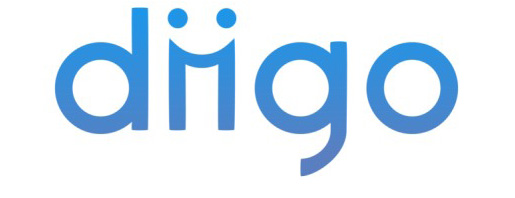 Close reading/deep reading and digital literacies/new literacies were rated as hot topics in the annual edition of What’s Hot and What’s Not in Reading Today. Reading professionals and classroom teachers alike are recognizing the importance of instruction that asks students to gather information from multiple texts and formats referred to in the Common Core State Standards. This piece explores how middle school students used Diigo, an online social bookmarking app, to digitally annotate texts and dialogue with each other to better understand science ideas.
Close reading/deep reading and digital literacies/new literacies were rated as hot topics in the annual edition of What’s Hot and What’s Not in Reading Today. Reading professionals and classroom teachers alike are recognizing the importance of instruction that asks students to gather information from multiple texts and formats referred to in the Common Core State Standards. This piece explores how middle school students used Diigo, an online social bookmarking app, to digitally annotate texts and dialogue with each other to better understand science ideas.
Reading disciplinary texts can be difficult for adolescents. Not only is the content unfamiliar and conceptually challenging, the texts themselves contain features such as visual representations that are often crucial for gaining a rich understanding of the text. However, many students aren’t sufficiently prepared to analyze and think about these features, as was reported in Time to Act: Final Report from Carnegie Corporation of New York’s Council on Advancing Adolescent Literacy. Also, in a 2008 article about adolescent readers, Timothy and Cynthia Shanahan suggest comprehension difficulties arise because of the students’ lack of familiarity with the content as well as their lack of familiarity with the unique textual attributes that reading in a given discipline requires. Finally, many adolescents lack the strategies necessary for monitoring their own comprehension so when they encounter difficult, disciplinary-specific texts, they aren’t prepared to read them closely, according to Carol D. Lee and Anika Spratley.
Annotation apps (iAnnotate, DocAS, Diigo, etc.) support active reading and provide students with features that allow them to mark texts as they engage in close reading. Students can employ these apps to help them target specific information and summarize key claims or findings related to their prior knowledge. When students use digital annotations to raise questions, they read more actively. By reading each other’s annotations, they are exposed to alternative ideas that may differ from their own, resulting in their appropriation of new ways to interpret texts.
While the use of apps has rapidly increased in schools, there remains little research on the ways annotations can be used to support close reading. This exploratory effort sought to begin to examine the possibilities. In their middle school science class, students were taught how to use Diigo to add sticky notes to online text in order to reflect on their thinking. As the class shared the same digital reading space, the digital annotations engaged their ability to clearly state their ideas, illustrate their thinking, and support their claims with evidence. Their annotations were coded and analyzed and it became clear students used annotations for multiple purposes: to pose questions, formulate claims, and request evidence from peers to answer questions they had about ideas in the text.
About 77 percent of the students used annotations to respond to a peer while about 20% indicated a response to the text and 3 percent indicated response to a side conversation. The process of collaborative annotation encouraged students’ documentation, critique, and refinement of ideas, which can aid learners in close reading of science texts. Peer interactions involved defining terms, posing questions, responding to questions, stating a claim, summarizing what the text or other students shared, disagreeing or challenging a peer, extending a peer’s idea with more evidence, and clarifying peers’ ideas when misinformation or a misunderstanding was advanced. These purposeful exchanges indicate a high degree of engagement with the process of online argumentation through the affordances and features of collaboration that Diigo provides.
There is great value to the social exchange of questions. Laura Kretschmar, the classroom science teacher noted the questions students generated came from a range of different perspectives on the texts that “[individual] kids may not have on their own.” Collaborative annotation served as a means of building social connections and “served as an opportunity for more kids to participate.” The teacher remarked on the need to hold students “accountable to reading the text” by having them first read the text and post their annotations before responding to others’ annotations.
Teachers can use annotations as a diagnostic tool in order to see where students’ misconceptions lie. Collaborative annotation provides space for peer-to-peer learning. Implementing a new technology requires classroom and school-based infrastructure. Integrating an annotation tool such as Diigo pays off when it becomes a frequent part of classroom practice.
To sign up for a Diigo Educator Account:
- Explore the Diigo for Educator site.
- Post articles, or links to online content, on your classroom website. (examples: Ms. Swandby’s site, Ms. Kretschmar’s site).
- Model the annotation strategy thinking aloud. This process may include questioning, clarifying, and making connections.
- Summarize by preparing a list of annotation categories students can refer to as they read.
- Invite students to annotate using the active reading guidelines.
- Assess student engagement with texts by reviewing their annotations.
Diigo gave all students a voice. It promoted dialogue focused around working together to better understand the text. Approachability of peer-to-peer interactions provided useful peer scaffolding. Peer-interactions became a student-driven entry point, welcoming different perspectives to engage with the text. Self-analysis of dialogue invited student reflection on quality conversation.
 Jill Castek is a Research Assistant Professor at Portland State. She leads the Literacy, Language, and Technology Research group. She can be reached at jcastek@pdx.edu.
Jill Castek is a Research Assistant Professor at Portland State. She leads the Literacy, Language, and Technology Research group. She can be reached at jcastek@pdx.edu.
This article is part of a series from the Technology in Literacy Education Special Interest Group (TILE-SIG).